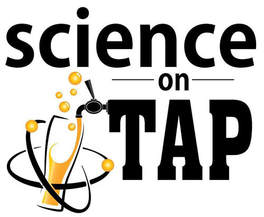
Join Cool Science for Science on Tap every 2nd Monday of the month at Jack Quinn’s in downtown Colorado Springs. Presenters begin at 6:30 pm with food and drink available beginning at 6:00 pm. A wide variety of fascinating topics are presented by local scientists for informal discussion, and the relaxed atmosphere encourages anyone and everyone to come explore the latest ideas in science and technology. From practical to theoretical, the presentations and group interactions provide a fun and interesting way to gain an understanding of the world around us.
Next On Tap: October 8, 2018
Spooky Action at a Distance (SA3D)
SA3D is one of the most astonishing phenomena known. It's simultaneously easy to demonstrate – and, so far, impossible to explain. It appears to violate some of the most cherished and fundamental tenets of physics.
An example of how SA3D can be demonstrated will be described. This uses an interferometer to show the wave nature of light. But light is also made up of indivisible particles called photons. In SA3D, really weird things happen - photons appear to split in half (or turn into twins!), and signals travel much faster than is possible.
Maybe faster-than-light travel is not a pipedream?
Bio: Dr. James J P Stewart
Professor, University of Strathclyde, Glasgow, Scotland, 1972-1985. Researcher at the Air Force Academy, 1984‑1990. Adjoint professor at UCCS, 2013-2016. CEO of Stewart Computational Chemistry, 1990 - now. Author of the popular (over 25,000 users) quantum-chemistry program MOPAC, which is used for modeling chemical systems, including crystals, and enzymes and other biomolecules.
Interested in atomic physics, cosmology, biochemistry, and quantum theory. Author of over 150 papers. Citations: Theory of AM1: 14,179, Theory of optimization: 7,889, Description of MOPAC: 2,453, speeding: 1 ($20 fine)
He has two cats, a wife, and a snow-blower, none of which work.
An example of how SA3D can be demonstrated will be described. This uses an interferometer to show the wave nature of light. But light is also made up of indivisible particles called photons. In SA3D, really weird things happen - photons appear to split in half (or turn into twins!), and signals travel much faster than is possible.
Maybe faster-than-light travel is not a pipedream?
Bio: Dr. James J P Stewart
Professor, University of Strathclyde, Glasgow, Scotland, 1972-1985. Researcher at the Air Force Academy, 1984‑1990. Adjoint professor at UCCS, 2013-2016. CEO of Stewart Computational Chemistry, 1990 - now. Author of the popular (over 25,000 users) quantum-chemistry program MOPAC, which is used for modeling chemical systems, including crystals, and enzymes and other biomolecules.
Interested in atomic physics, cosmology, biochemistry, and quantum theory. Author of over 150 papers. Citations: Theory of AM1: 14,179, Theory of optimization: 7,889, Description of MOPAC: 2,453, speeding: 1 ($20 fine)
He has two cats, a wife, and a snow-blower, none of which work.








